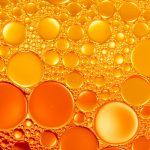If you’ve ever worn ill-fitting dress shoes, you’ve probably developed a blister. They’re painful, irritating and there’s a lot of misinformation going around about how you should treat blisters. Stop wondering whether you should pop it or leave it alone. Here’s everything you need to know about how to treat a blister.
What causes a blister?
Blisters are typically caused by friction from repetitive motions, although heat, cold, chemicals and infections can all result in blisters as well.
When you have a blister, the top layer of your skin, called the epidermis, forms a bubble. The bubble is typically filled with a clear liquid called serum, but it may be blood or pus instead.
Blisters form to protect the tissue beneath them from further damage.
Some diseases also result in blisters. If you have a blister or blisters that you don’t think formed due to friction or other surface-level trauma to your skin, they may be the result of:
- Herpes
- Chickenpox
- Skin conditions like eczema or dyshidrosis
- Various autoimmune diseases like bullous pemphigoid or pemphigus
How to treat a blister
As tempting as it is, we don’t recommend popping a blister. When left alone, it acts as a cushion and prevents infection. When you pop it, you’re opening up an already delicate area to bacteria. Instead, wrap the area in gauze or put a small adhesive bandage on it to help protect it.
If a blister does burst by itself — and it will occasionally happen — be sure to leave the skin on top of it alone. Wash the area with gentle soap and water to keep it clean, and then apply some sort of bandage.
Unless they’re a symptom of a more significant problem, most blisters will heal by themselves relatively quickly.
In some cases, blisters will be large, painful or located in an awkward spot. If that’s the case, you may want to pop and drain them despite the risk of infection. To do so:
- Clean the blistered area thoroughly.
- Find a clean, rust-free needle and sterilize it with rubbing alcohol.
- With the needle, poke a hole at the edge of the blister. It doesn’t have to be very big.
- Gently apply pressure to the blister until the liquid in it drains away.
- Rewash the area, being careful not to remove the skin layer over where the fluid was.
- Apply an antibiotic ointment to the site of the blister.
- Use a sterile bandage or some gauze to cover the area loosely.
If you develop signs of an infection, visit your doctor as soon as possible. Pus, redness, swelling, hot skin around the blistered area and red streaks leading away from it can all indicate that something is wrong.
What not to do
The best thing you can do for a blister is to leave it alone. It is formed to protect you, and it can’t do that if you don’t let it.
- Don’t try to pop or drain it unless absolutely necessary
- Don’t bandage the area too tightly
- Don’t apply too much pressure to the area
If you develop a blister on the bottom of your foot, it can be challenging to keep pressure off of it. In that case, use a bandage designed explicitly for that purpose. There are options available that offer enough extra cushioning to keep you comfortable.
If your blister is filled with blood, it’s what’s known as a blood blister. Blood blisters can be more uncomfortable than regular blisters, and icing them can offer some relief. Don’t place the ice pack directly against your skin. Instead, use a towel as a barrier.
How to prevent blisters
The easiest way to treat a blister is to avoid developing one in the first place. Of course, that’s easier said than done, but there are a few methods that tend to be effective.
Wearing comfortable, well-fitted shoes with clean, dry socks will prevent most blisters you risk developing on your feet. It may be worth investing in moisture-wicking socks if you exercise often as moist skin blisters more easily.
If you frequently walk long distances, whether you’re hiking for fun or your job has you on your feet and moving all day, breathable footwear can help reduce the likelihood of developing a blister.
After your feet, your hands are the most commonplace to see blisters form. Wearing suitable gloves will prevent most blisters, although there are tapes that can work too.
Using the proper personal protective equipment can help protect you from blisters caused by heat, cold or chemical exposure as well.
Blisters are annoying, but they’re rarely dangerous. With the right preventative measures and treatments, should those fail, you shouldn’t have to worry about them. If you’re concerned that your blisters are a sign of a serious illness, however, talk to your doctor right away.
Are you looking for more skincare advice? Check out more great informative articles on our blog!






